On the cusp for 50 years: Why isn't Capitol Hill one of OKC's thriving historic districts?
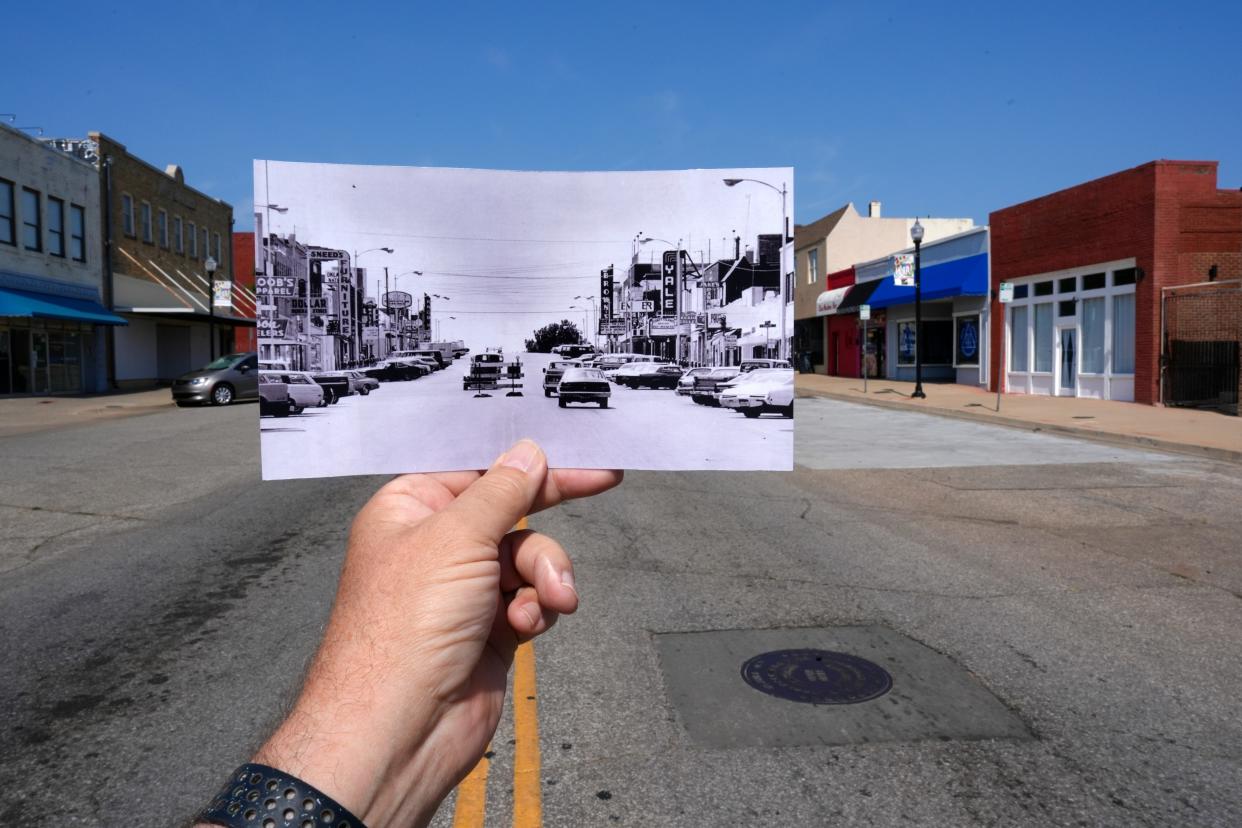
Of all of Oklahoma City’s historic districts, Capitol Hill presents the most tantalizing opportunity for creating a regional destination combining the look and feel of a mid-1900s downtown with a celebration of the area’s growing Hispanic/Latino population.
Oklahoma City over the past 20 years has seen one historic district after another find new life as dining, retail and entertainment destinations. But the struggle to make over Capitol Hill, one of the city's largest and most eclectic districts, continues to elude numerous efforts undertaken the past 50 years.
Year after year, whether due to a lack of resources or a clash between old and new, Capitol Hill remains constantly on the cusp.
On one hand, the opening earlier this year of the Capitol Co-op bike shop and Elemental Coffee in a building abandoned for 25 years is just the sort of business the southside district is looking for as part of a long-envisioned revival.
The weddings, celebrations and events at the renovated Yale Theater are a hopeful sign, and a couple of building restoration projects are ongoing.
But the district also is seeing an increase in boarded–up buildings — not the direction desired by Gloria Torres, director the Capitol Hill Main Street organization Calle Dos Cinco.
“The challenge for the property owners is the significant investment needed to upgrade these buildings,” Torres said. “Without a market return, that makes it a challenge. It's market rate to fix it up, but we can’t charge market rate rent. Everybody wants to be here, but these buildings are so big, it takes a lot of strategy to invest.”
Businesses are needed to generate foot traffic. And yet foot traffic is what is needed to attract new businesses. Even established shops with customer bases are confronted with the paradox of Capitol Hill.
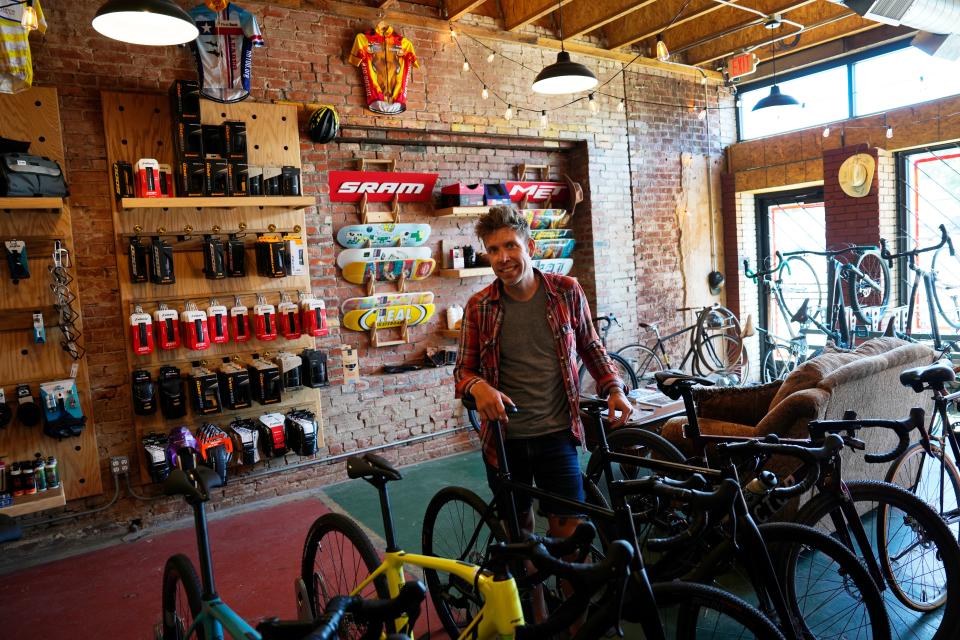
Chad Hodges, a well-known figure in the local biking community, opened Capitol Co-op earlier this year in a building abandoned for more than a quarter century at 2420 S Robinson Ave.
Before opening in the renovated storefront, Hodges and his partner, Evan Bybee, successfully ran his shop at Wheeler, and his new location includes a second location for Elemental Coffee, a popular spot in Midtown. And yet ...
More: 14 major projects planned for downtown OKC that we're following, and where they stand
“It could be busier,” Hodges said. “The foot traffic isn’t here yet. Fortunately for us, we’ve been around the cycling community for a long, long time. They support our bike shop and our coffee shop. We have our busy days with group rides, and they swing by. Other days it’s hit or miss.”
Capitol Hill: a unique district with a unique history

It’s no coincidence that Capitol Hill has the look and feel of a mid-20th century downtown.
The once flourishing community hub was founded in 1901 by B.R. Harrington, who created the town in an attempt to make it the home of the country’s newest state capital. When that plan fizzled out, the town was annexed by Oklahoma City in 1910.
In its heyday, Capitol Hill was home to its own television and radio stations, the Capitol Hill Beacon newspaper, and stores selling the gamut of what one would expect to find in a thriving downtown ranging from jewelry, clothing, appliances and furniture to pharmacies, doctors' offices and banks.
More than a century later, the downtown of Capitol Hill remains largely intact with the ghosts of the buildings left behind still lining what was long known as Commerce Street.
The problems facing Capitol Hill date back a half century to when the district was confronted with an exodus of retail to the then-newly opened Crossroads Mall. The big department stores, John A. Brown’s and J.C. Penney’s, both moved to what was the city’s first modern mall.
The district’s handful of theaters started showing adult movies. Pawn shops replaced the shoe stores and clothing shops.
A 1975 study commissioned by the South Oklahoma City Chamber of Commerce reported the same issues — and opportunities — facing the district in 2024. Conclusions by the study’s author, Bob Malone, still ring true in 2024.
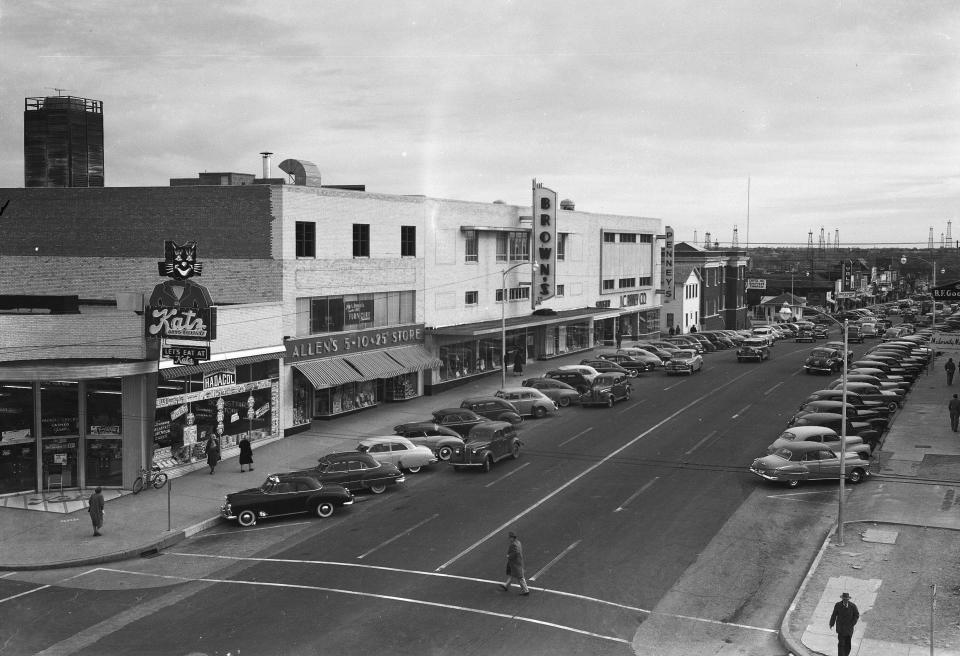
“The sidewalk traffic along the street has really dropped off and the business environment of the area has changed quite a bit over the years,” Malone wrote. “What we will need are businesses that don’t need a lot of sidewalk traffic. A retail establishment will have to meet the market of the surrounding neighborhood and be unique so it can draw from throughout Oklahoma City.”
Malone’s study, which included a consumer audit by the University of Oklahoma Center for Economic Management Research concluded Capitol Hill’s population consisted of older residents who have little formal education and low incomes.
Similar challenges, however, confronted similar districts across the city. And in the time since the 1975 Capitol Hill study, once moribund areas like Paseo, 16th Street Plaza District and Uptown 23rd are thriving.
The former town of Britton, though not as big as Capitol Hill, shares a similar history in that it, too, was once the downtown of a former suburb annexed by Oklahoma City. And yet Britton also is well on its way to being a popular historic district, undergoing a revival that includes restaurants, shops and a wave of older building renovations.
Why hasn’t Capitol Hill taken that next step, and what will it take to make that happen?
Kim Cooper Hart, a planner with Oklahoma City, has spent almost 20 years working with the city’s emerging historic districts, including Capitol Hill.
Comparisons can be drawn with the Plaza District, which, like Capitol Hill, was surrounded by a distressed neighborhood, struggled with empty storefronts and commercial buildings in desperate need of repairs.
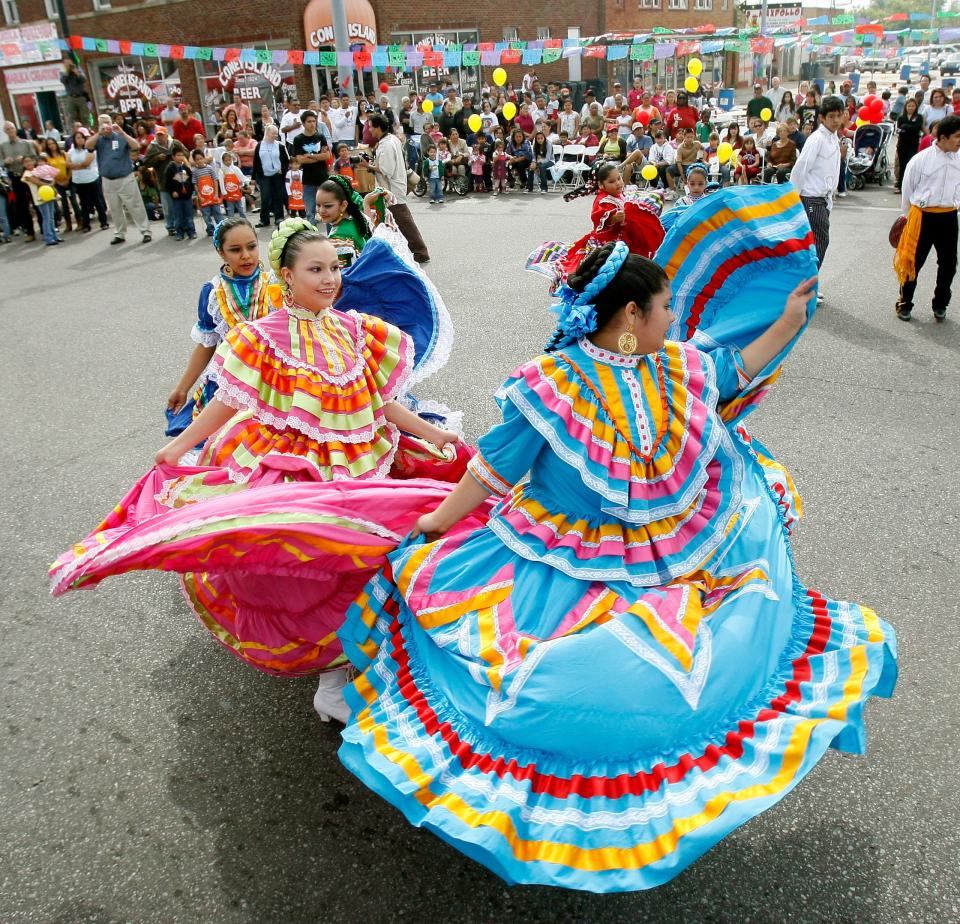
The Asian District centered at NW 23 and Classen, meanwhile, saw an influx of Vietnamese immigrants who weren’t initially embraced by area residents. Yet both districts are now thriving destinations for both locals and out-of-town visitors.
One of Cooper Hart’s earliest interactions with Capitol Hill stakeholders took place in the boardroom of the old Union Bank. She saw friction between the old Capitol Hill crowd and the newer Hispanic and Latino immigrants.
“They kept talk about ‘all those people’ and “We have to keep those people out of our district.’ And they were talking about people who are Hispanic and Latino. These were pioneer families in the city who were uncomfortable with people from Mexico coming into their part of the city.”
Cooper Hart said she introduced herself as both a planner and liaison with the city, and then advised the group to reconsider their views of the area’s growing immigrant population.
More: What is the future of Bricktown? Shiny skyscrapers alongside a historic aluminum-sided warehouse
“As long as you keep calling your Hispanic brothers and sisters ‘those people,’ your goals will be tainted,” she said. “And you won’t be successful.”
From the back of the room, Cooper Hart heard a slow, loud clap. It was south Oklahoma City businessman Tony Tyler, whose family is invested in billboards and broadcasting, including stations aimed at Hispanic and Latino residents. They also owned property in Capitol Hill, including the Grill on the Hill restaurant.
Tyler looks back and sees a district that is struggling to figure out how it connects with not just nearby residents but with the people from across the city.
“You take someone who graduated from Capitol Hill High School in 1960 and ask them to invest in Capitol Hill now and it’s not the same place,” Tyler said. “It's not where I grew up anymore. But was there potential tension at one point in time? Yeah.”
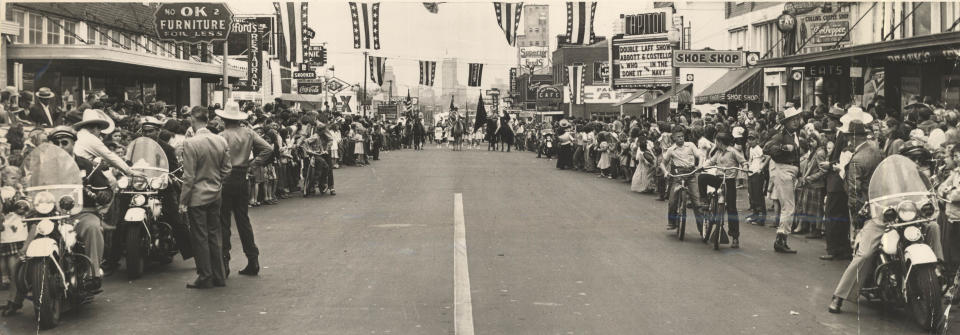
Tyler points out that Steve Mason, who redeveloped the Yale Theater, invested not just in property but with tenants in the Plaza District and “will that into happening.”
“It had the support of the neighborhoods to go to the restaurants, to go the shops,” Tyler said. “We realized that in Capitol Hill, we have to make a destination place. The socio-economics of that ZIP code do not merit a lot of eating out and spending. They (Hispanic/Latino community) do a lot of stuff at their homes. Instead of going out with family, they stay at home and entertain. They love to cook. They love to entertain.”
Jorge Hernandez, founder of Tango PR, has spent the past two decades promoting Capitol Hill. He started the city’s only public relations firm specializing in serving the city’s Hispanic/Latino communities 18 years ago and has witnessed the slow shift in the relationship between the old Capitol Hill crowd and the immigrant community.
“When one is such a big part of Oklahoma City history, and also south Oklahoma City history, it takes quite a few years to get people accustomed to the idea that the future is going to look differently than the past,” Hernandez said. “There is a little tension, but it is better. But it’s definitely there. Overall, the city, thanks to the mayor and other leaders, is embracing the changes taking place.”
Capitol Hill is now 70% Hispanic/Latino, and the district that for decades hosted an annual 89er Parade celebrated by throngs of people keeps that tradition alive with Cinco de Mayo festivities.
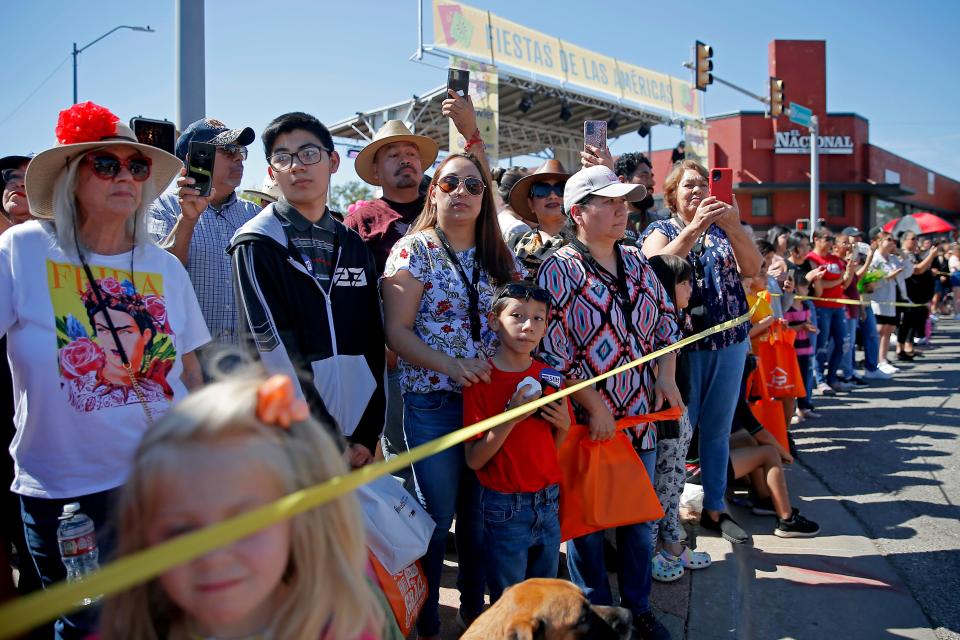
Looking back at the history of Capitol Hill, Hernandez sees similarities between the community that existed 50 years ago and the immigrants who live and work in the area in 2024.
“We are a hard-working, faith-based, blue-collar community,” Hernandez said. “We tend to celebrate things differently than things were celebrated back in the day.”
The Hispanic/Latino community shares the desires expressed 50 years ago to see Capitol Hill thrive once again. The Capitol Hill District Activision Playbook, released in 2023 by the OU Institute for Quality Communities, surveyed area residents in both English and Spanish.
Those surveyed spoke of wanting Capitol Hill to celebrate the Hispanic/Latino community by offering a mix of shops featuring books and media, gifts, imported items from Mexico and Guatemala, clothing and home decor. Hispanic/Latino restaurants and bakeries were frequently mentioned, as were venues for live music and dancing lessons.
The Yale Theater, one of the more ambitious restorations, was mentioned by those wanting to see it host more concerts, live productions, comedy shows and screenings accessible and relevant to the Latino community.
The theater at 227 SW 25 was once one of at least a half dozen cinemas in Capitol Hill and is the only one back in use following an extensive renovation by Steve Mason and Aimee Ahpeatone that started in 2017.
Mason, a major investor in the revivals of Automobile Alley and the Plaza District, is among several interviewed by The Oklahoman who believe Capitol Hill was hit harder by the pandemic and was slower to recover.
“We opened in fall 2019,” Mason said. “The Yale stalled out like everyone did for two and a half years. But here we are in 2024, and we have more weddings booked than we did last year, and it’s just July.”
The increased activity at the theater is being noticed by neighbors and is inspiring more potential development along SW 25. The Oklahoma City Community Action Agency moved into the renovated former John A. Brown’s Department Store in 2004.
Jessie Thompson oversees the Community Action Agency, which employs 60 people in Capitol Hill who assist disadvantaged communities find housing, jobs and health care in addition to providing small business training and loans.
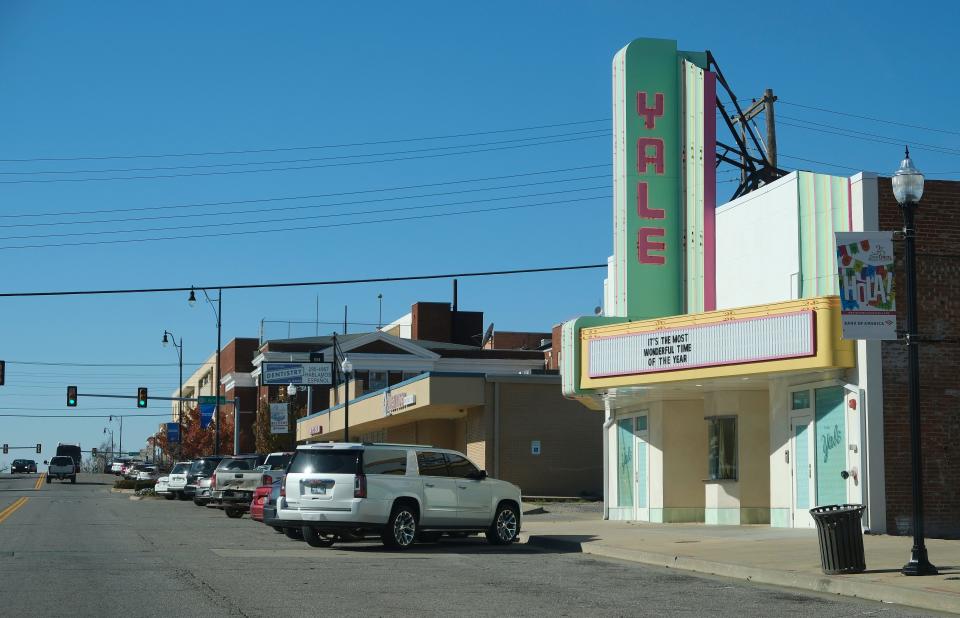
The agency is now working with economic development consultant Cathy O’Connor to find a way to redevelop the adjoining former J.C. Penney Department Store. Their vision is to turn the first floor of the former Penney’s into a mix of permanent restaurants, shops and pop-up food stands with housing on the upper floors.
“I really think it has a lot of potential,” Thompson said. “The Yale is bringing a lot of foot traffic; they are selling out and parking is hard to find. If we can get the Penney’s building done, that’s huge. That could be the catalyst.”
Tyler said the department store has sat vacant for a reason, but also suspects Capitol Hill might look far different today if the property had been redeveloped 20 years ago.
“That J.C. Penney’s could have been bought for a dollar in the late ‘90s, but that was when the asbestos fear was out there and everyone saw (removal) as costing too much money,” Tyler said. “The world has figured out cheaper ways to do that and get government funding to help. For 10 to 15 years, that kept it sitting there.”
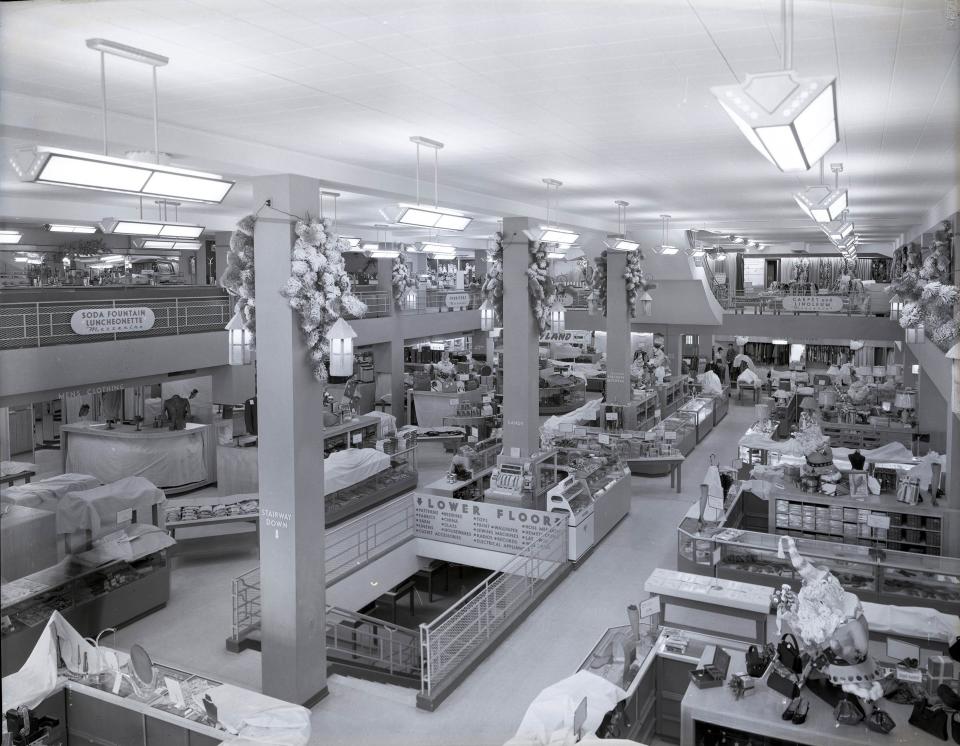
Yet another game changer is expected to occur with upcoming construction of a festival plaza being built by the city later this year along Harvey Avenue between SW 24 and SW 25. With the historic Capitol Hill Baptist Church as a backdrop to the west and a view of the downtown skyline to the north, the plaza will include colorful art, Talavera tiles, an arched entry, new lighting and seating.
The plaza will represent the first decidedly Hispanic/Latino public space in the district, but likely won’t be the last. Torres is hoping to answer desires for public art and color next year with a shot at hosting the 2025 Sunny Dayz Festival.
The event, which celebrates and promotes female and nonbinary artists, is held annually to add color and murals to communities that in Oklahoma City included the NE 23 and Britton districts.
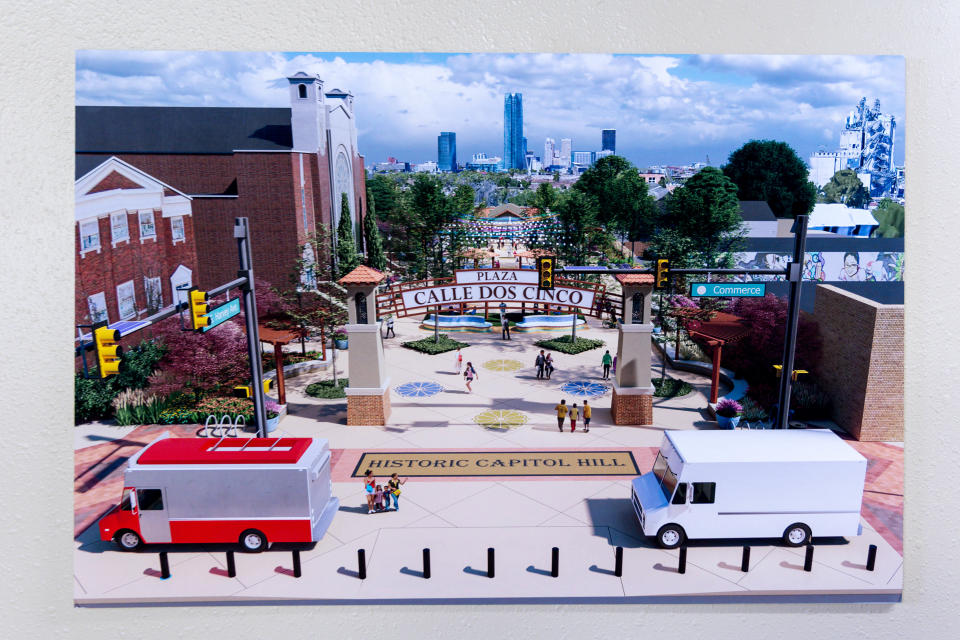
The playbook survey indicates the plaza and murals are only the start of what’s possible to make Capitol Hill a destination for locals and visitors. Other ideas include a gateway arch decked with Mexican flags and light pole banners promoting the area’s Hispanic/Latino culture.
Mason sees such advances and the location of Capitol Hill making the district far more attractive for future growth.
“Capitol Hill is the equivalent of South Congress in Austin geographically,” Mason said. “Capitol Hill is closer to the convention center than Automobile Alley, the Plaza District, Midtown and Film Row. And it’s accessible to downtown now that Scissortail Park hits the river.”
Changes coming soon to empty and boarded-up buildings
Grill on the Hill, a southside favorite at 324 SW 25, continues to draw a mix of blue-collar workers, southside old-timers and a sprinkling of civic leaders as it has since 2004 when it was opened by Jamie and Jerry Simms. It continued to emerge as a Capitol Hill anchor when it was taken over by Norma Ericson and Rory Carver in 2008.
The restaurant briefly closed toward the tail end of the COVID-19 pandemic but was reopened in 2022 by Happy Plate partners Shannon Roper, Aly Cunningham and Curt Breuklander.
Coney Island still serves hot dogs and chili at 240 SW 25 since it opened in 1971. They, however, are the exception when it comes to long-running businesses along SW 25.
As of January 2023, Capitol Hill was lined with 70 street-facing commercial spaces between Walker Avenue and Shields Boulevard, according to the playbook study. Of those, 32% were vacant and the status was unclear for another 19%.
Some renovations underway are expected to improve the picture.
On the west entry to Capitol Hill at SW 25 and Walker Avenue, a former Hispanic grocery store is being renovated and reopened by the owner of Feria Latina Supermarket at NW 23 and Ann Arbor.
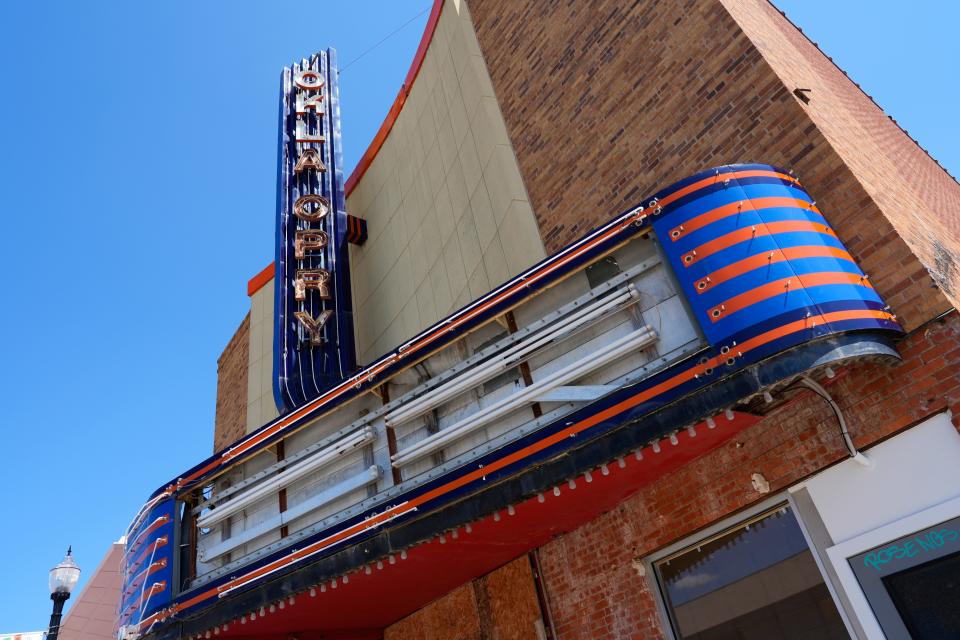
The former Knobb Hill Theater at 400 SW 25, last home to the Oklahoma Opry, is boarded up, and its marquee is busted open. But the adjoining snack bar and recording studio for the opry was renovated and is now home to Resonant Head, a live music venue. The owners have previously told The Oklahoman renovations of the theater are to follow within the next four years.
On the opposite end of SW 25, the former Capitol Hill Methodist Church sits boarded up awaiting renovation into a new home for the Boys & Girls Club.
Dennis Coyne and Rocky Chavez, meanwhile, are slowly moving forward with renovations of a handful of buildings they purchased along SW 25, including one where work has stood still for a couple of years at the northwest corner of SW 25 and Robinson Avenue.
Coyne admits the building, built in 1906, has proven to be a bigger challenge than anticipated. The pair had a concrete stucco facade removed to uncover the original brick exterior but then had trouble finding a contractor to restore the original brick.
“I see it as a historic gem,” Coyne said. “It's the oldest standing building down there.”
Coyne and Chavez hired an area resident to do the work, and he was halfway through the job when he was murdered at a hotel along Interstate 35. They are hoping to resume work soon with competition next year.
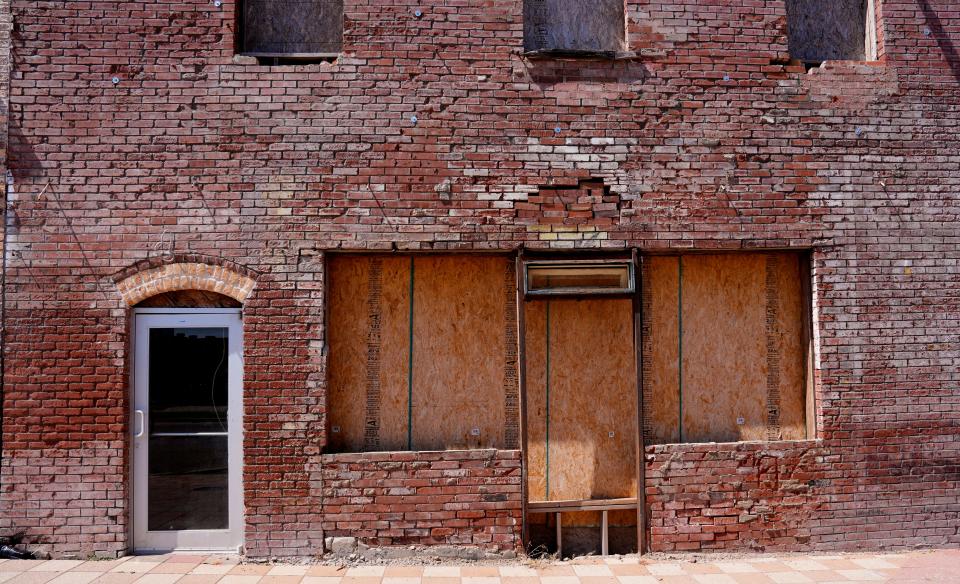
Despite such efforts, Cooper Hart remains concerned about what it will take for Capitol Hill to reach the point of where it is seen as a success comparable to the Plaza District, Paseo and other historic commercial corridors.
“The people who own buildings in Capitol Hill don’t have a lot of personal wealth,” Cooper Hart said. “They're not Steve Mason. They're very incremental in their efforts. These need more than incremental repairs. They have deferred maintenance and are getting worse. You need someone with big wallets to come into these districts. Capitol Hill doesn’t have that person yet.”
Hernandez acknowledges the wait for Capitol Hill to reach its full potential seems to never end.
“It's been on the cusp and the cusp and the cusp,” Hernandez said. “I really think the area is going in the right direction. Hopefully we can someday be in all the tourist brochures and magazines. We expect to have a nice cultural area like those in San Antonio, San Diego, New Mexico ... right here in Oklahoma City.”
Staff writer Steve Lackmeyer has covered Oklahoma City's development for The Oklahoman since 1990. Contact him at slackmeyer@oklahoman.com. Please support his work and that of other Oklahoman journalists by purchasing a subscription today at subscribe.oklahoman.com.
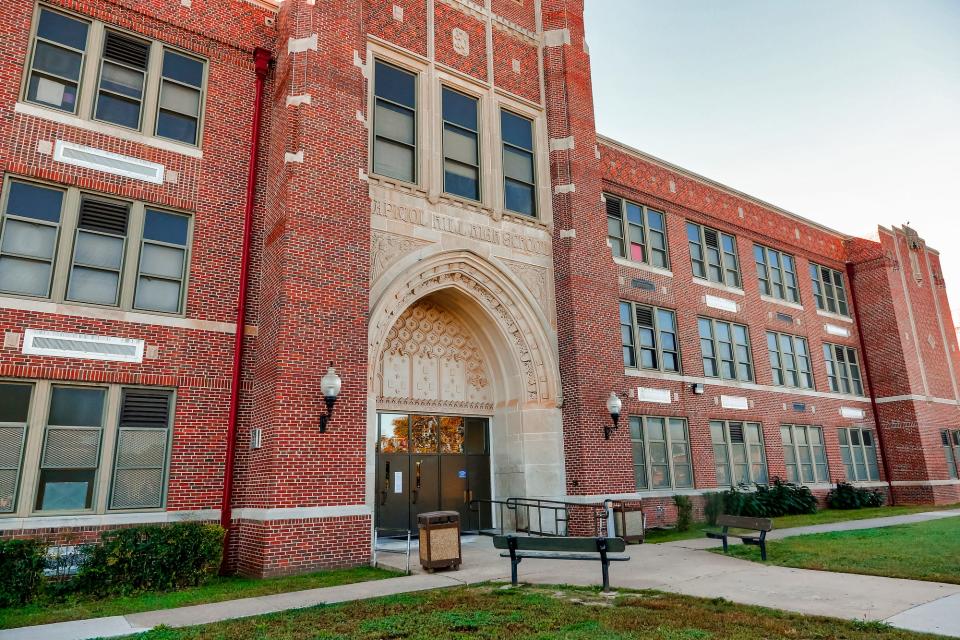
Historic Capitol Hill High School future still uncertain
In a district lined with historic structures, Capitol Hill High School stands out as the most well-known landmark in the community and yet its fate remains uncertain as school officials prepare to remake the campus.
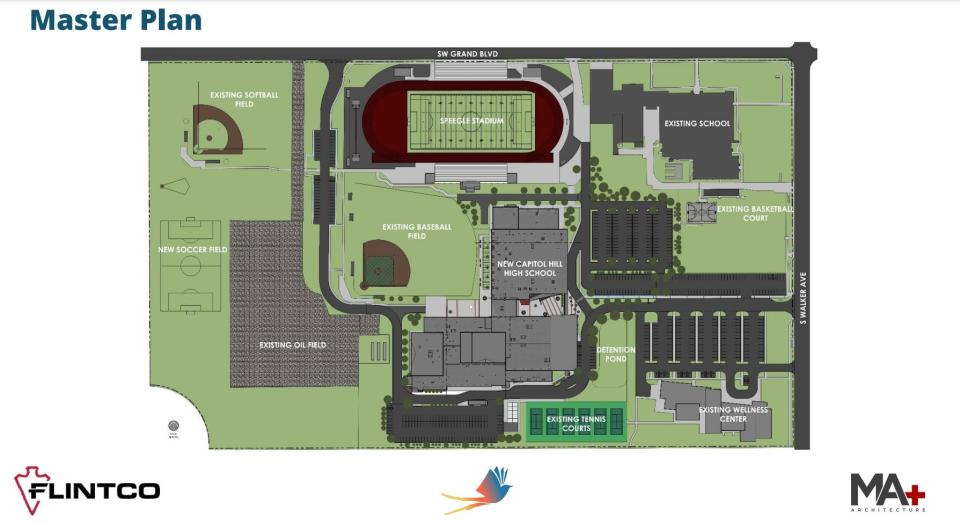
Capitol Hill, 500 SW 36, was built in 1928. Plans developed under the former superintendent, Sean McDaniel, showed the original school removed as part of the new campus. After protests by alumni, school officials promised to consider ways to keep the original building standing for possible redevelopment.
The new superintendent, Jamie Polk, is promising to keep an open mind and the latest renderings released in June show the school still standing as part of a new campus.
This article originally appeared on Oklahoman: History and future of OKC's Capitol Hill keep the district on the cusp

